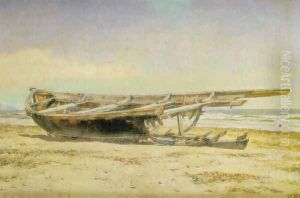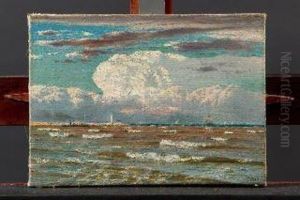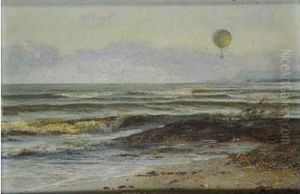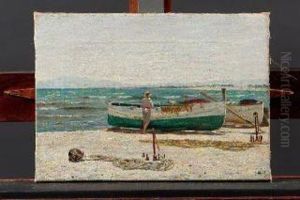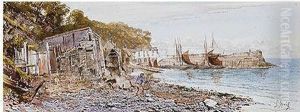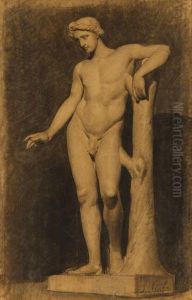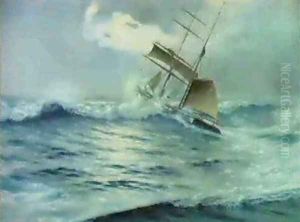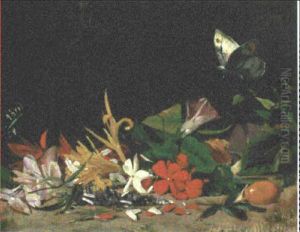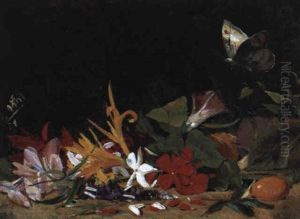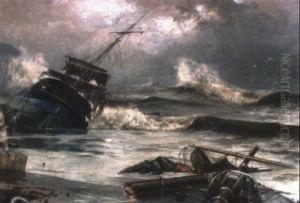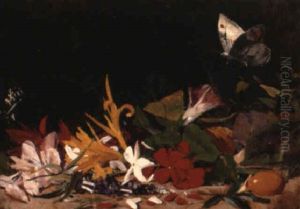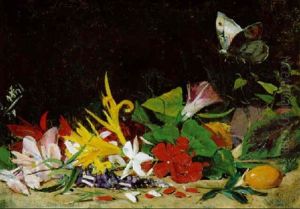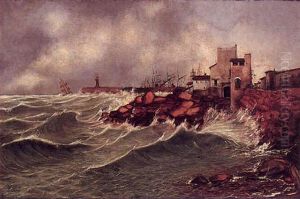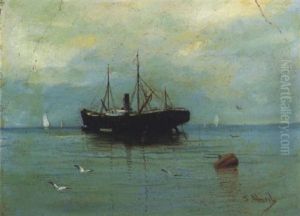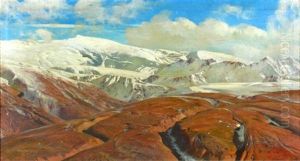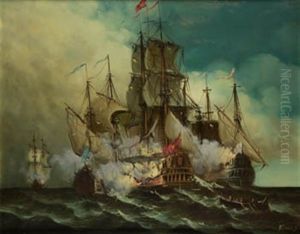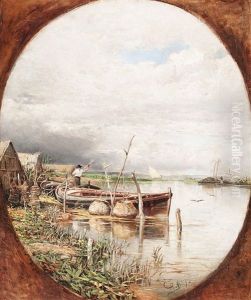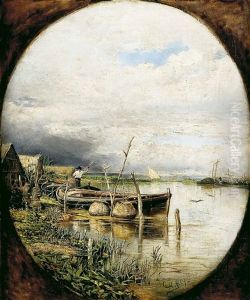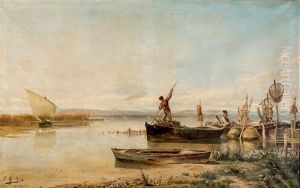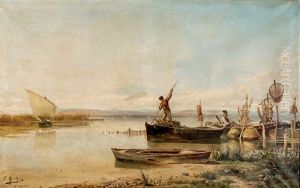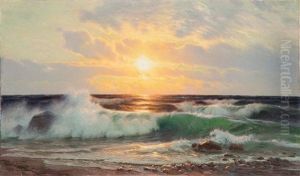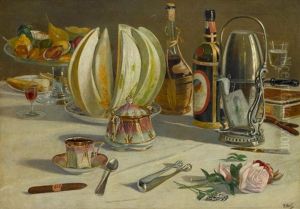Salvador Abril y Blasco Paintings
Salvador Abril y Blasco was a notable 19th-century Spanish painter, born in 1831 in Alcoy, a town in the province of Alicante, Spain. He was a part of the Spanish romanticism movement, which was characterized by its emphasis on emotion and individualism as well as glorification of all the past and nature, preferring the medieval rather than the classical. Abril y Blasco's works were deeply influenced by these romantic ideals, often reflecting a fascination with historical subjects, landscapes, and genre scenes that conveyed a strong sense of mood and atmosphere.
Educated at the Real Academia de Bellas Artes de San Carlos in Valencia, Abril y Blasco honed his skills under the guidance of established artists of the time. His education and training there were foundational, embedding in him a deep appreciation for classical techniques, which he later melded with the more emotive and expressive qualities characteristic of Romanticism. Throughout his career, he exhibited his works in various prestigious venues, gaining recognition and accolades for his contributions to Spanish art.
In addition to his paintings, Salvador Abril y Blasco was also known for his work as an illustrator, contributing to periodicals and books of the era. This aspect of his career reflected the broader 19th-century trend of illustration, where art intersected with literature and popular culture, helping to disseminate the romantic aesthetic to a wider audience.
Despite his accomplishments, Abril y Blasco remains a somewhat lesser-known figure outside of Spain, overshadowed by contemporaries who gained greater international fame. Nevertheless, within Spain, his works are celebrated for their technical skill, emotional depth, and their embodiment of the spirit of Spanish Romanticism. He passed away in 1901, leaving behind a legacy that, while perhaps not as widely recognized as some of his peers, continues to be appreciated for its contribution to the rich tapestry of 19th-century European art.
